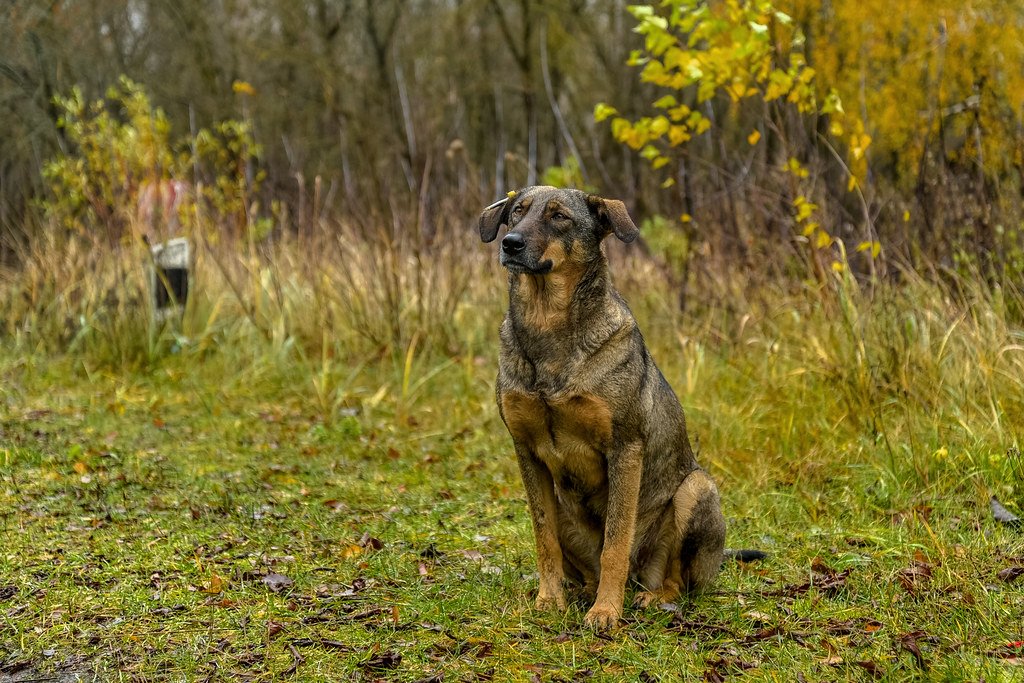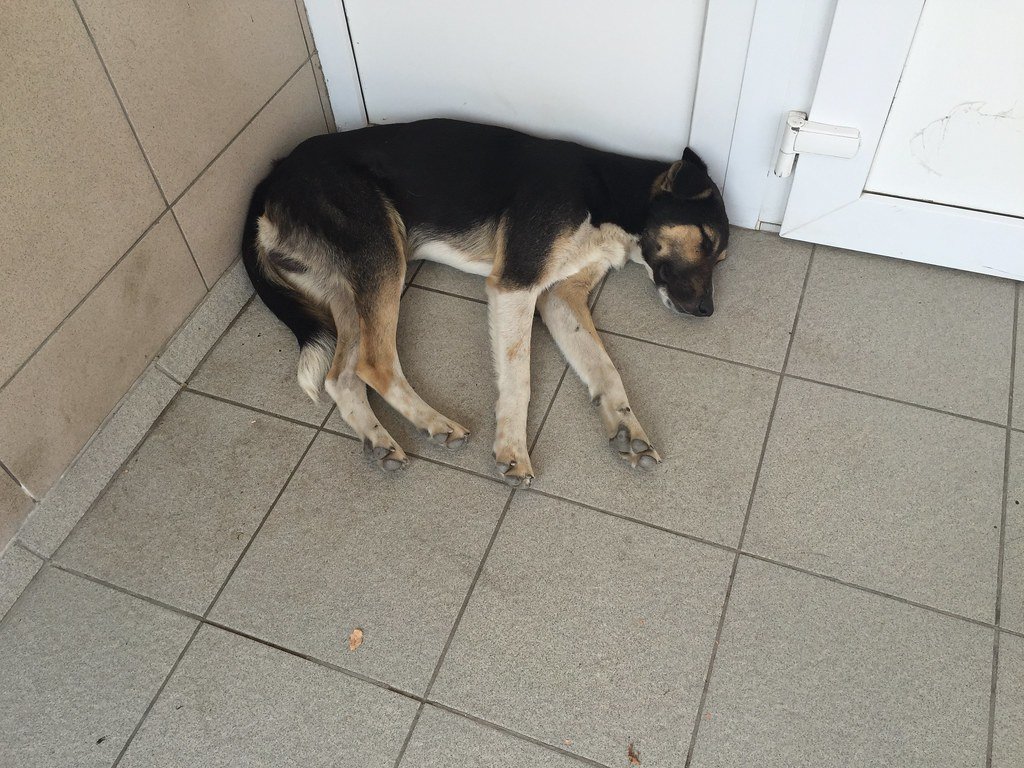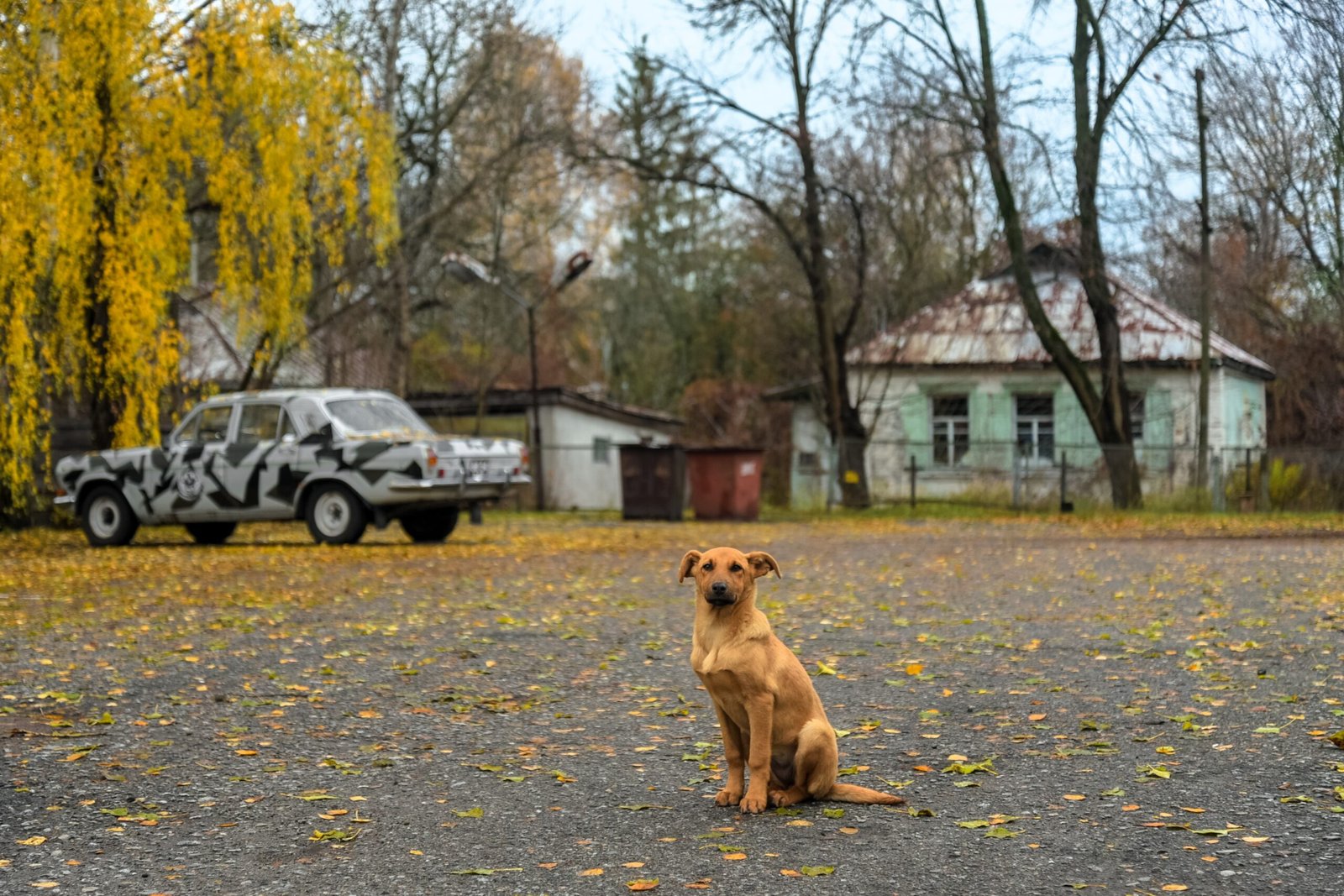Imagine a place so radioactive that humans can’t live there, yet hundreds of dogs roam freely through abandoned buildings and overgrown streets. This isn’t science fiction – it’s reality in the Chernobyl Exclusion Zone. These aren’t just any ordinary stray dogs wandering around a ghost town. They’re the descendants of pets left behind during the 1986 evacuation, and after nearly four decades of isolation, they’ve developed into something truly extraordinary. Scientists are now discovering that these canines might possess the rarest genetic traits on Earth. What started as a tragic abandonment has turned into one of nature’s most fascinating experiments. The radiation that drove humans away has created a living laboratory where evolution happens at warp speed.
The Heartbreaking Origins of Chernobyl’s Canine Population
When the nuclear reactor exploded on April 26, 1986, families had just minutes to evacuate their homes. They were told it would be temporary – maybe a few days at most. Pet dogs and cats were left behind with bowls of food and water, their owners believing they’d return soon to collect them. The Soviet authorities had other plans, and those few days stretched into decades. Many of the original pets didn’t survive the harsh first winter or the initial radiation exposure. However, some did survive, and they began to breed. Their offspring inherited not just their parents’ survival instincts, but also something far more remarkable – genetic adaptations to one of the most radioactive environments on Earth.
Genetic Mutations That Defy Scientific Understanding

Recent DNA analysis has revealed that Chernobyl’s dogs carry genetic variations unlike any other canine population studied. The constant exposure to low-level radiation has triggered mutations at a rate roughly 10 times faster than normal. Most of these changes are subtle, affecting things like DNA repair mechanisms and cellular protection systems. Think of it like having a built-in hazmat suit written into their genetic code. Some dogs show enhanced abilities to repair radiation damage, while others have developed more efficient antioxidant production. These aren’t the dramatic Hollywood-style mutations you might expect, but rather precise biological tweaks that help them thrive where other animals would struggle. It’s as if nature hit the fast-forward button on evolution itself.
Physical Traits That Set Them Apart

While the genetic changes are invisible, some physical differences are becoming apparent to researchers. Many Chernobyl dogs have developed thicker, more resistant coats that seem to provide additional protection against environmental hazards. Their immune systems appear stronger than average, with some showing remarkable resistance to diseases that typically affect stray dog populations. Interestingly, many have also developed enhanced sensory abilities – sharper hearing and smell that help them navigate their unique environment. Some researchers have noted unusual eye coloration in certain bloodlines, though whether this is directly related to radiation exposure remains under investigation. These physical adaptations make them perfectly suited for their radioactive homeland, but potentially vulnerable if relocated to normal environments.
The Radiation Resistance Phenomenon

What makes these dogs truly remarkable is their apparent resistance to radiation levels that would be harmful to most mammals. Studies show they can tolerate exposure rates roughly 50 times higher than what’s considered safe for humans. Their bodies have learned to live with background radiation that would cause serious health problems in other dog breeds. It’s like they’ve developed a biological superpower that most animals simply don’t possess. This resistance isn’t just about surviving – many of the dogs appear to be thriving, with normal lifespans and healthy reproduction rates. Scientists believe this adaptation happened incredibly quickly in evolutionary terms, suggesting that extreme environmental pressure can drive genetic changes much faster than previously thought.
Behavioral Adaptations Beyond Normal Canine Instincts
The psychological and behavioral changes in these dogs are just as fascinating as their physical ones. They’ve developed pack structures and hunting strategies specifically adapted to the Exclusion Zone’s unique ecosystem. Unlike typical stray dogs that scavenge near human settlements, Chernobyl’s canines have learned to hunt the abundant wildlife that has flourished in the absence of humans. They show less fear of large predators like wolves, possibly because they’ve learned to coexist in the same territory. Many display heightened intelligence and problem-solving abilities, perhaps developed through generations of navigating the complex, debris-filled landscape of abandoned Pripyat. Their social behaviors have also evolved, with more cooperative pack hunting and sophisticated communication systems than seen in most feral dog populations.
Scientific Research Reveals Unprecedented Discoveries
The Clean Futures Fund and various international research teams have been studying these dogs since the early 2000s, but recent advances in genetic sequencing have accelerated discoveries dramatically. Blood samples and genetic analysis reveal mutations in genes responsible for DNA repair, immune function, and cellular protection that have never been documented in any other animal population. Some of the genetic variants are so unique that they’re being studied for potential applications in human medicine, particularly in cancer research and radiation therapy. The dogs essentially serve as a natural experiment in rapid evolutionary adaptation, providing insights that would be impossible to obtain through laboratory studies. Researchers estimate that it would take thousands of years for similar adaptations to develop under normal circumstances, yet these dogs achieved them in just a few decades.
The Conservation Challenge of an Accidental Treasure
Here’s where things get complicated – these potentially revolutionary genetic traits exist in a population that’s constantly at risk. The Chernobyl dog population fluctuates between 800 and 1,200 individuals, making them vulnerable to disease outbreaks, harsh winters, and genetic bottlenecks. International organizations have started spay and neuter programs to control the population, but this could inadvertently eliminate the very genetic diversity that makes them scientifically invaluable. Some researchers argue for establishing a breeding program to preserve their unique genetics, while others worry about the ethical implications of maintaining animals adapted to radioactive environments. It’s a race against time to study and potentially preserve these genetic treasures before they’re lost forever. The dogs represent an irreplaceable natural library of genetic adaptations that could benefit both veterinary medicine and human health research for generations to come.

Andrew Alpin from India is the Brand Manager of Doggo digest. Andrew is an experienced content specialist and social media manager with a passion for writing. His forte includes health and wellness, Travel, Animals, and Nature. A nature nomad, Andrew is obsessed with mountains and loves high-altitude trekking. He has been on several Himalayan treks in India including the Everest Base Camp in Nepal.






